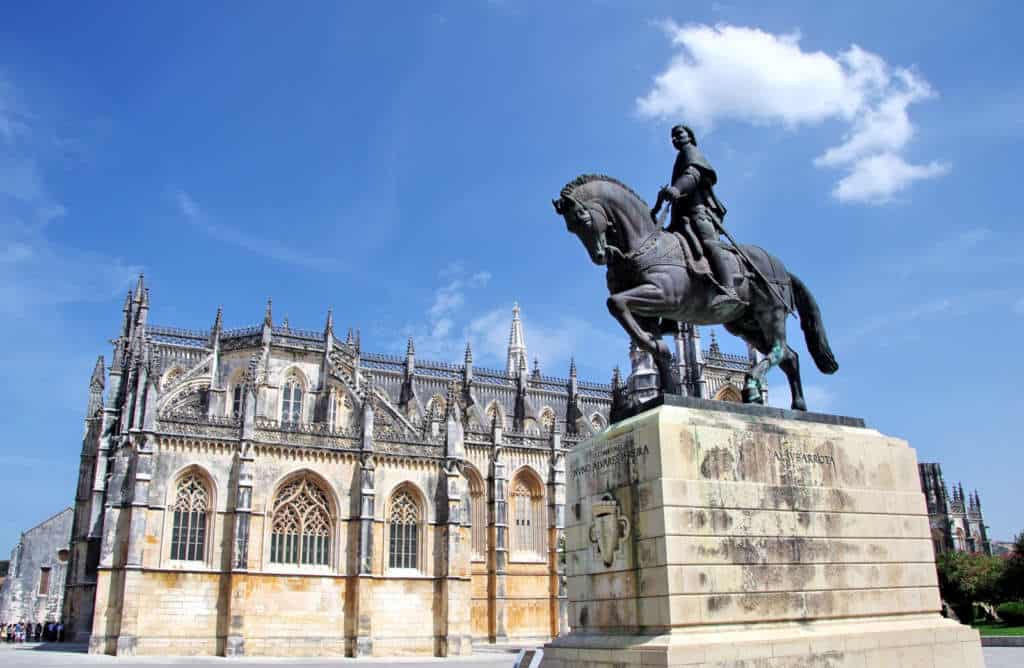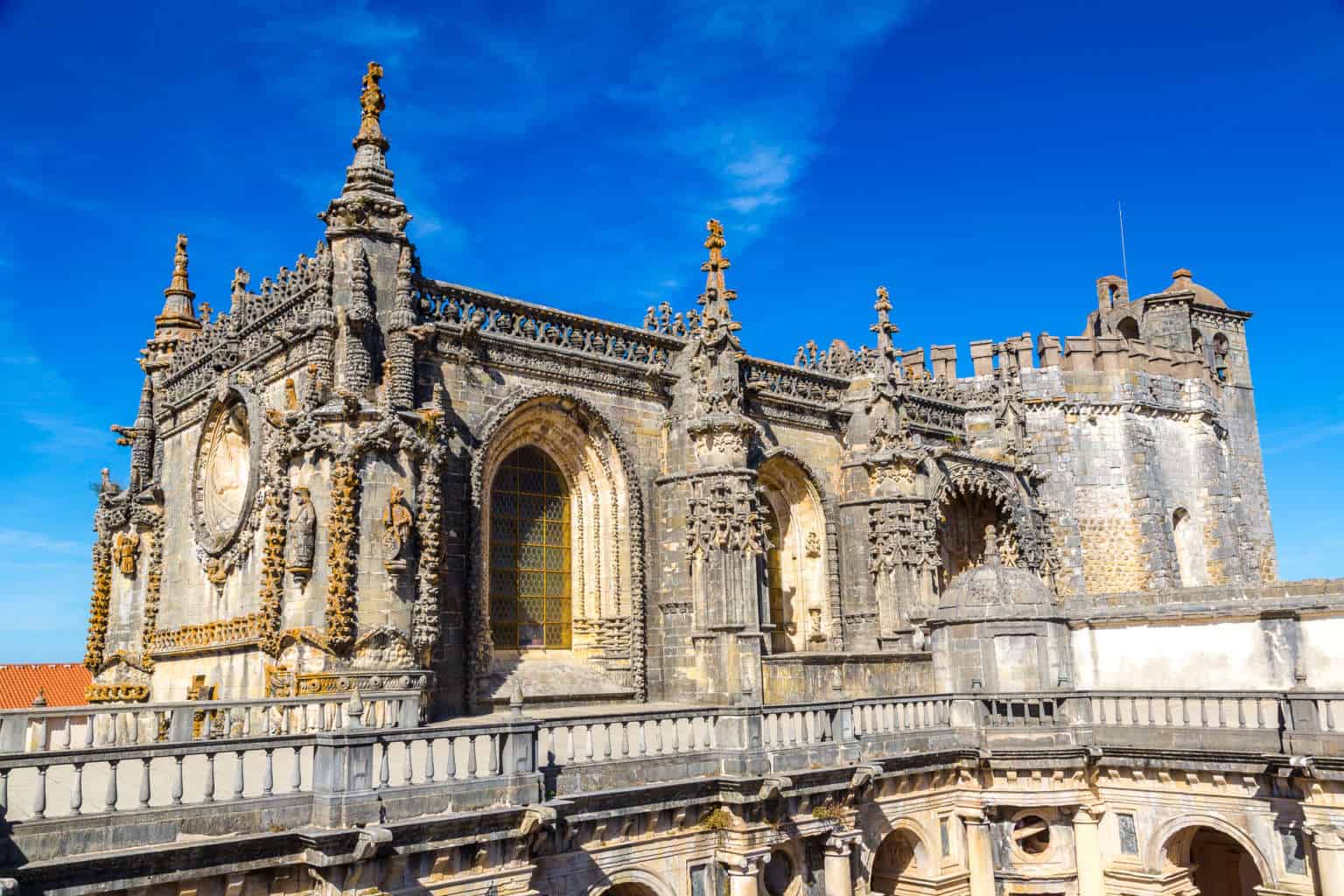Tomar, the last stronghold of the Knights Templar, one of the most beautiful monasteries in Portugal and by far the prettiest window in the entire country. The town, located just 150 kilometers from Lisbon, also attracts hundreds of tourists every year for the Festa dos Tabuleiros one of the most beautiful traditional festivals. The mysticism that accompanies the fun fits perfectly with the dozens of myths that have grown up around the settlement. Some speak of hundreds of secret tunnels under the old town, others of great riches hidden by the Knights Templar. In addition, near Tomar is the supposedly haunted castle of Castelo de Almourol, where phantoms beg for forgiveness on St. John’s night.
Monastery of the Order of Christ in Tomar
The monastery of the Order of Christ is an ideal example of a fortress serving more than just a defensive function. The Knights Templar developed the hill in Tomar as a place of sacred worship, which was close to collapse after the monastic congregation was dissolved. Only thanks to the king’s sentiment were the survivors of the brave monks able to settle behind the walls under the renamed obediencia.

History of the Knights Templar in Portugal
The establishment of the castle, or monastery, in Tomar is closely linked to the beginning of the kingdom with its capital in Lisbon and the presence of the Order of the Poor Knights of Christ and the Temple of Solomon in the Iberian Peninsula, which at that time was occupied mainly by Islamic tribes. Historians consider this time as the era of the Crusades, and the region of today’s Portugal itself resembled distant Palestine in terms of missions. In this historical context, armed monks took an active part in the creation of new Christian settlements, villages, as well as large communities of people. The Knights Templar themselves arrived in Portugal in 1128, and three decades later King Afonso Henriques granted them a vast territory midway between Coimbra and Santaré, known as the Termo de Ceras, as a reward for their role in conquering the foothills of the capital domain.
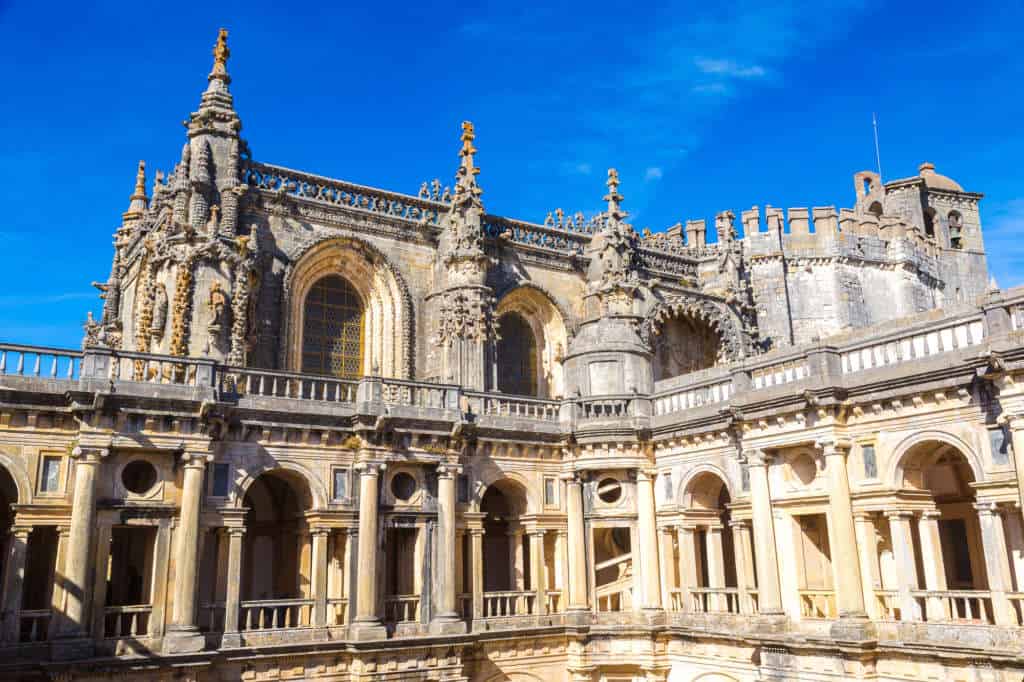
The newcomers immediately laid the foundations for a fortress and the village of Tomar. As a result of persecution by the French ruler Philip IV, the order became extinct by papal decrees in the early 14th century. The Portuguese King Dinis, however, wished against the wishes of the religious hierarchy to keep the monks and their assets under the banner of a new formula confined to the borders of his state. The Ordem Militar de Cristo, or Order of Christ, was proclaimed in 1319 after several years of negotiations with the Holy See. This new obedience followed the same principles and spirit of the outlawed Templars.
What is worth seeing?
The castle and monastery of the Order of Christ are characterized by the presence of examples of many trends in art. Skilled observers will note the interweaving of medieval architectural styles, such as Romanesque, Gothic, or the later Manueline and Renaissance currents.
Castle

The castle was built around 1160 in a strategic location, over a hill and near the Nabão River. It has an outer defensive circle and a citadel, or alcáçova, in the middle. The fortress, along with its central tower, which serves mainly residential functions, is a relative breakthrough in the idea of defensive construction, which the Knights Templar introduced to Portuguese lands as a result of their inspiration, their experiences in their travels in Normandy and Brittany. Another unique solution for the people of the time was round towers in the outer walls, which are more resistant to attacks than the well-known square-plan versions. When the city of Tomar was founded, most of its residents lived in houses inside the peripheral walls of the monastic complex.
Church (Charola)
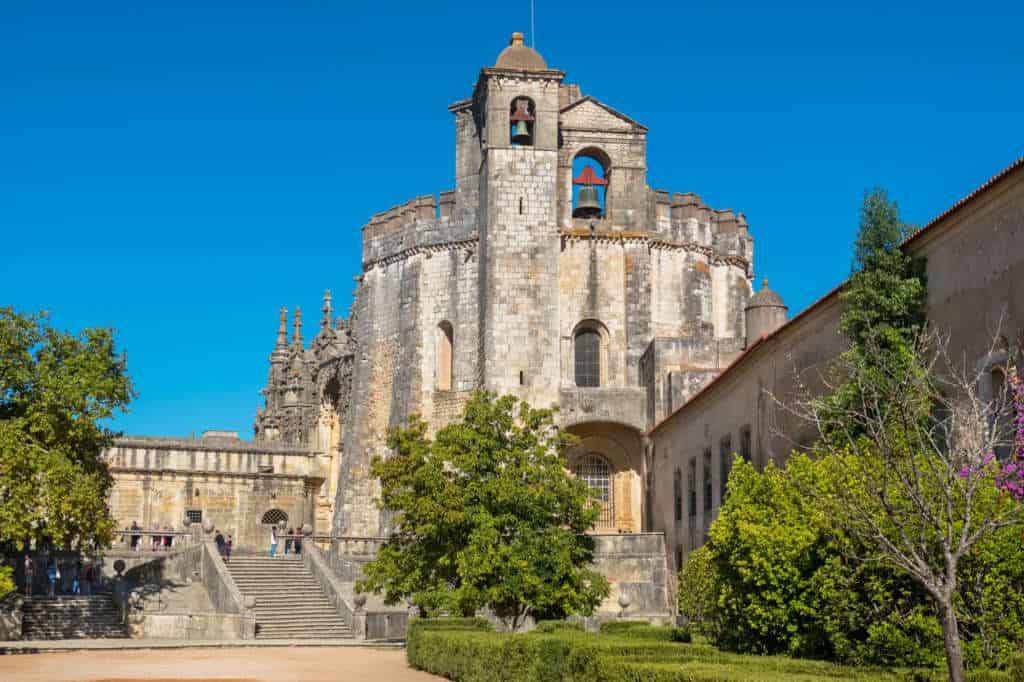
The circular temple, dedicated to religious worship, is modeled on the Church of the Holy Sepulcher, as well as the first building the Knights Templar could see from the Jerusalem hillsides, the Mosque of Omar. One of the oldest elements of the complex, the Romanesque columns depict floral and animal motifs. The interior of the chancel is further decorated with numerous late Gothic statues and paintings, added during a renovation sponsored by King Manuel I in 1499.

The paintings are attributed to the strenuous work of Portuguese court painter Jorge Afonso, while the carved decoration is credited to Flemish master Olivier de Gand and Spaniard Hernán Muñoz. The magnificent, intricately planned panel depicting the martyrdom of Saint Sebastian is credited to Gregório Lopes.
Manueline nave

The entrance to the church is through a magnificent side portal, decorated with abundant stucco, statues of the Virgin and Child, and Old Testament prophets. The portal was designed by João de Castilho around 1530. After a few steps, visitors reach the climactic part of the temple. From the outside, the rectangular nave is covered with abundant Manueline designs, including gargoyles, pinnacles, statues, or a kind of “ropes” reminiscent of those used on ships.

Perceptive tourists will notice the ornate cross of the Order of Christ, the emblem of King Manuel I, and the armillary sphere. Inside, the Manueline nave is connected to the Romanesque church by a large arch. In addition, it is covered by a ribbed vault that protects the choir. It used to be possible to admire similar decorative elements on the balustrades or stone canopies over the heads of the faithful, however, most of them were destroyed by Napoleonic troops.

Tomar window
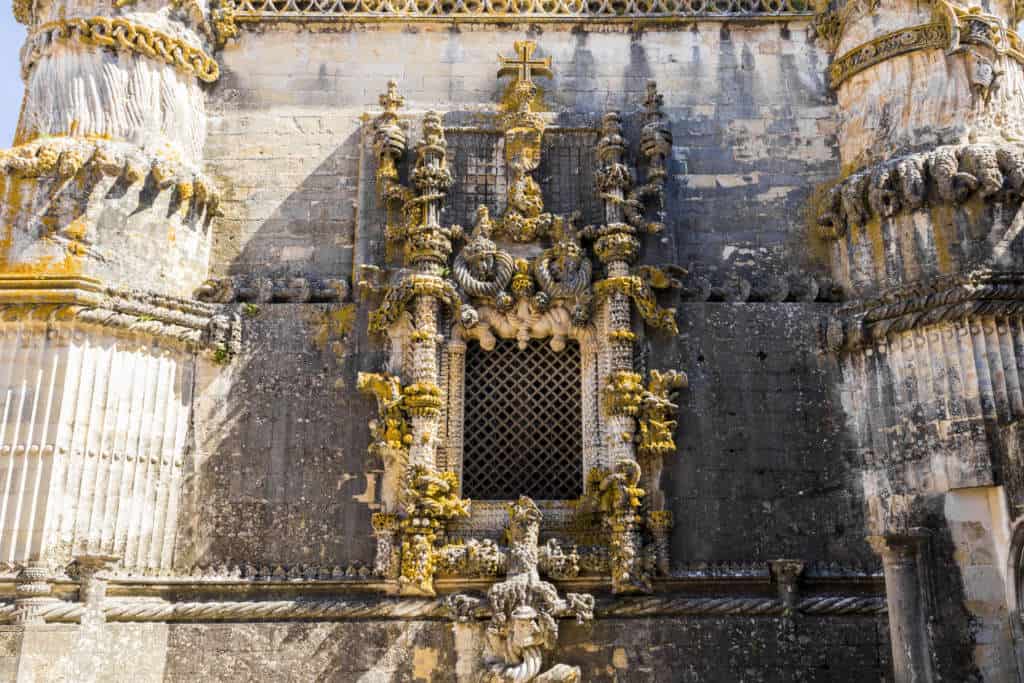
The mighty window takes on an improbable lightness thanks to meticulously carved corals and fantastic floral motifs. The small human figure in the lower part of the monument probably represents the sculptor Diogo de Arruda, who completed his design, which is now considered a masterpiece of Manueline-style decoration. It is impossible to pass by indifferently and not be impressed by the symmetry, the craftsmanship of the finishing of the small elements, which are slowly covered with sediment that gives the whole a mystical form.

Cloisters
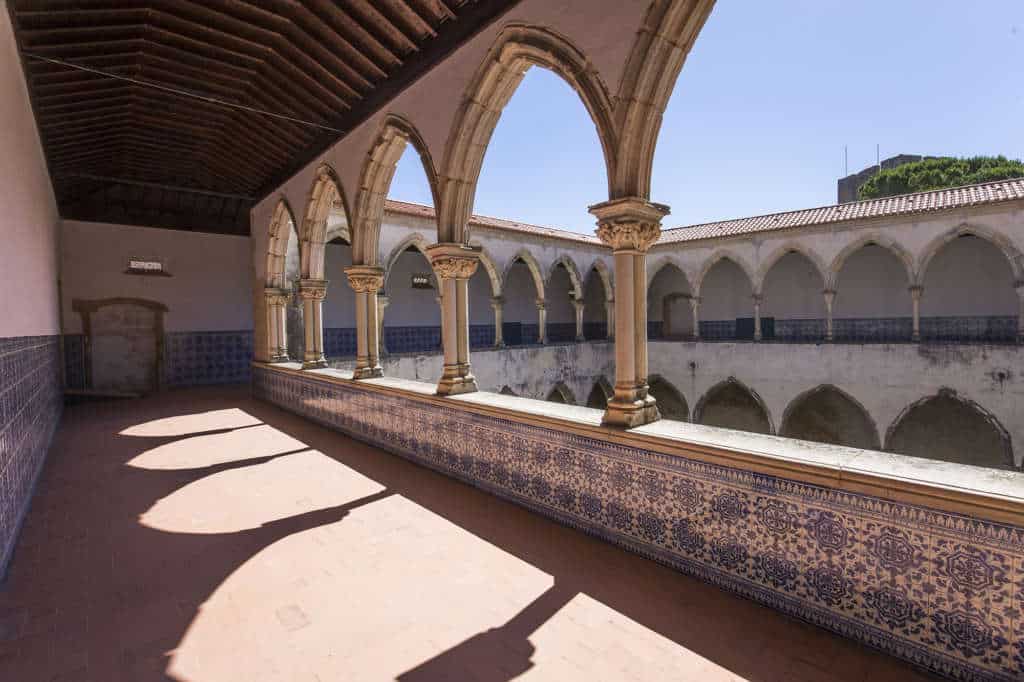
The monastery is currently characterized by the presence of eight cloisters, different in form. They were built at the turn of the 15th and 16th centuries. Among the most interesting is undoubtedly the two-story Gothic section, which was the former laundry of the monks. Peripheral to Cemitério was the burial place of knights and monks. In its elegant interiors you can spot azulejos tiles from half a millennium ago, as well as the Manueline tomb of Vasco da Gama’s brother, Diogo. In addition, the sacred buildings of Saint Barbara or King John III are worth a visit.
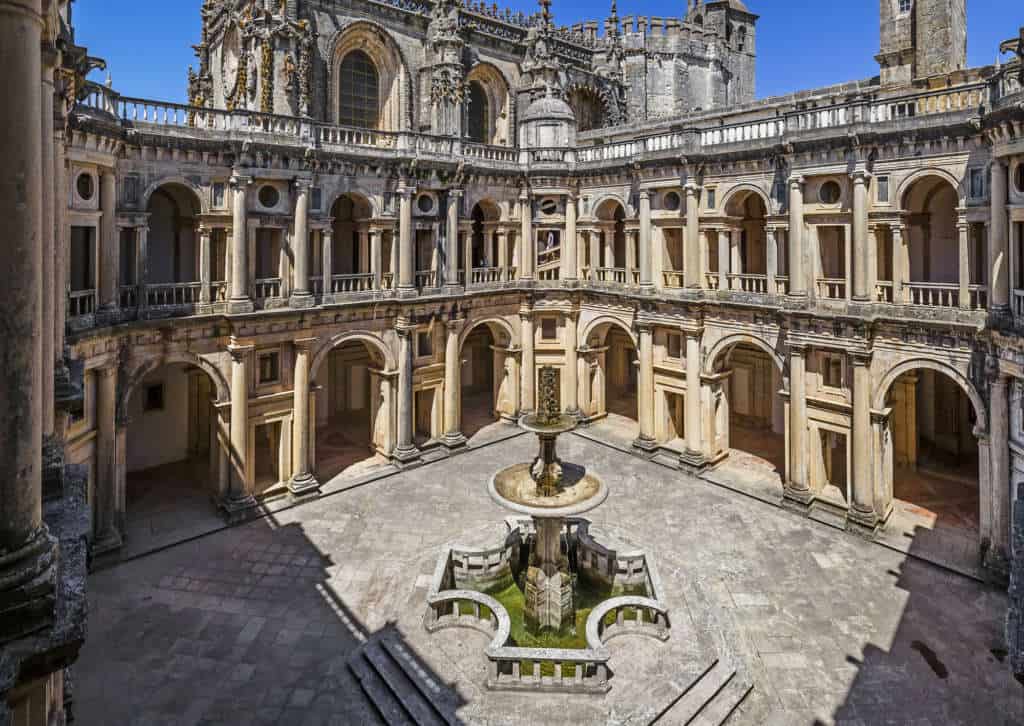
The first architect of the latter was Diogo de Torralva, creator of, among other things, the nave at the Hieronymite monastery. This magnificent two-story building connects the scriptorium to the church and is considered one of the most important examples of Mannerism in Portugal. The floors are connected to each other by four elegant spiral staircases, located at each corner of the complex.
2020 ticket prices
Admission to the monastery is ticketed.
- Normal ticket – 6 euros
- Discounted ticket – 3 euros
- Family ticket – 2 parents, 2 children – 50% off
Discounted tickets are available for schoolchildren, students and senior citizens (over 65). It is also possible to purchase tickets to the entire heritage trail, which includes the Monastery of Batalha, the Monastery of Alcobaca and the Monastery of the Order of Christ in Tomar.
Festa dos Tabuleiros
Associated with a centuries-old religious tradition, the festival attracts people from all over Portugal. It takes place every four years at the end of June and beginning of July, which is probably related to the celebration of the summer solstice. Local people then parade matching pairs with girls carrying tabuleiros on their heads.
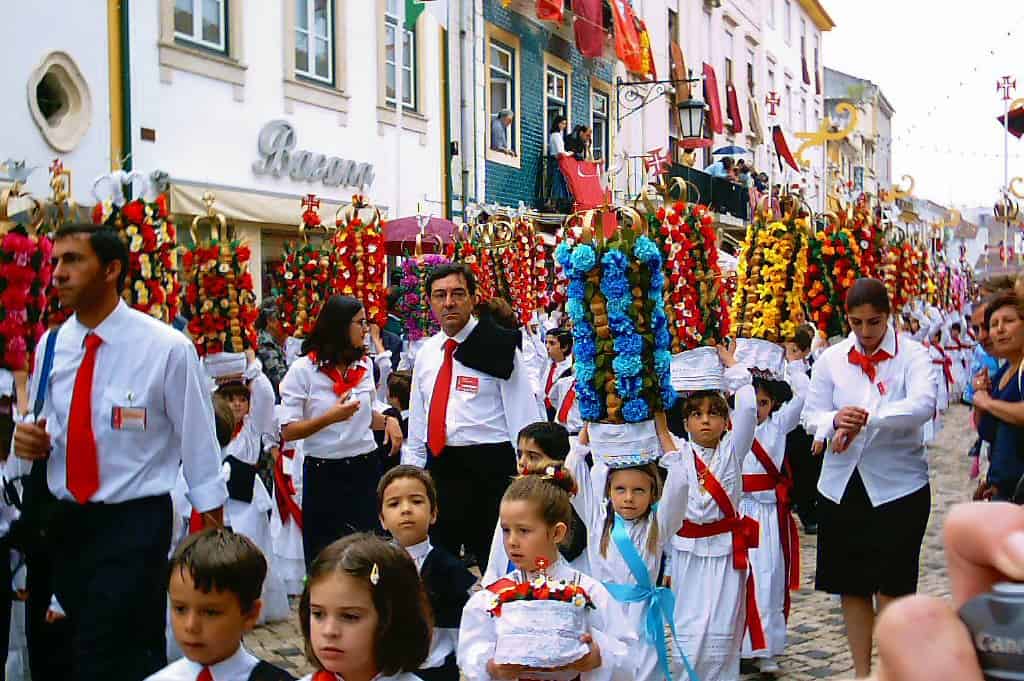
fot: Diogomedina / CC0, wikimedia
Tabuleiros consist of 30 stacked pieces of bread, in six rows of five decorated with flowers. At the top of such a structure is a crown, which usually contains a white dove, symbolizing the Holy Spirit or armillary sphere, a reminder of Portugal’s era of historic maritime expansion. Above it is always placed the cross of the Order of Christ. The festival also includes various other festivities, such as the “Procession of the Crowns,” the “Procession of the Boys,” the “March of the Butler,” and the “Arrival of the Holy Spirit Bulls,” as well as social games.
John the Baptist Church

Igreja de São João Baptista is located in the center of Tomar. It was originally planned in the 15th century, but owes its current shape to reconstruction after several decades of operation. In 1520, King Manuel I elevated its status to that of a collegiate church, making it one of the churches under the direct patronage of the ruler. Outside, tourists will notice a beautiful Manueline gate with classical floral motifs and an octagonal bell tower with shy national motifs, such as an armillary sphere, a Templar cross, and a 16th-century clock.
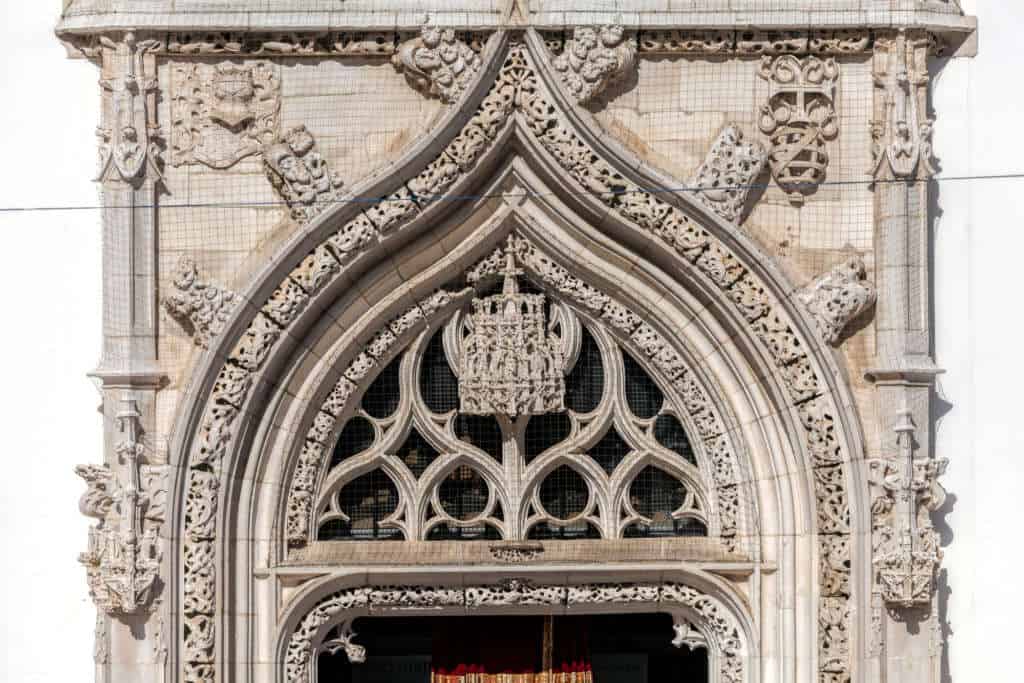
Inside the temple are paintings by Gregório Lopes, a painter who represented the character of his era.

Hermitage Nossa Senhora da Conceição
The Nossa Senhora da Conceição Hermitage was built in the sixteenth century under the direction of Diogo de Torralva in the late Renaissance trend. It is located halfway to the top of the hill on which the massive fortress of the Order of Christ monastery in Tomar rises.

fot. Tomáš Páv, public domain, wikimedia
The chapel seems to evoke the idea of Roman typology for classical basilicas, with three naves and an apse. In reality, however, it is a small church with an atrium and chancel. A set of six columns supports a ceiling finished with a barrel vault, giving the space a kind of allegory of power typical of Mannerist architecture. Symbolism related to Marian devotion and the dogma of the Immaculate Conception is present in numerous wall decorations through the use of finely detailed sculptural elements. As a curiosity, it is worth mentioning that originally the space where the building now stands belonged to the northeastern part of the monastery wall.

fot: Alvesgaspar / CC BY-SA, wikimedia
How to get to Tomar from Lisbon?
Tomar is located just 140 kilometers from Lisbon. It is connected to Lisbon by rail, so it is usually the train that is the most convenient transportation option.
Trains to Tomar depart from Lisbon – Oriente station, usually 15 times a day. The trip takes two hours and costs €9.85. The station is located on the outskirts of the city, about a 15-minute walk from the Monastery of the Order of Christ, a few minutes to the center. Check the schedule at cp.pt.
Buses leave from Sete Rios station, much less frequently, about 5-6 times a day. The trip takes an hour and a half and costs 9.50 euros. The bus stop in Tomar is right next to the train station.

Alcobaca Monastery is one of the prettiest in Portugal
Travel by car to Tomar is about 8 euros for the gates on the A1 highway. Bypassing the tolls, you can take the road around, through Alcobaca, Batalha, Fatima – in my opinion, it is well worth it. You will need 2-3 hours to visit each place, among others.
